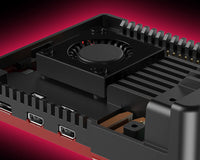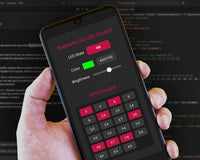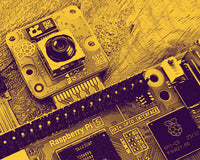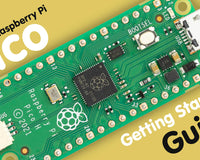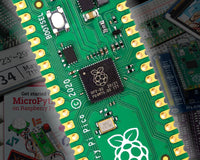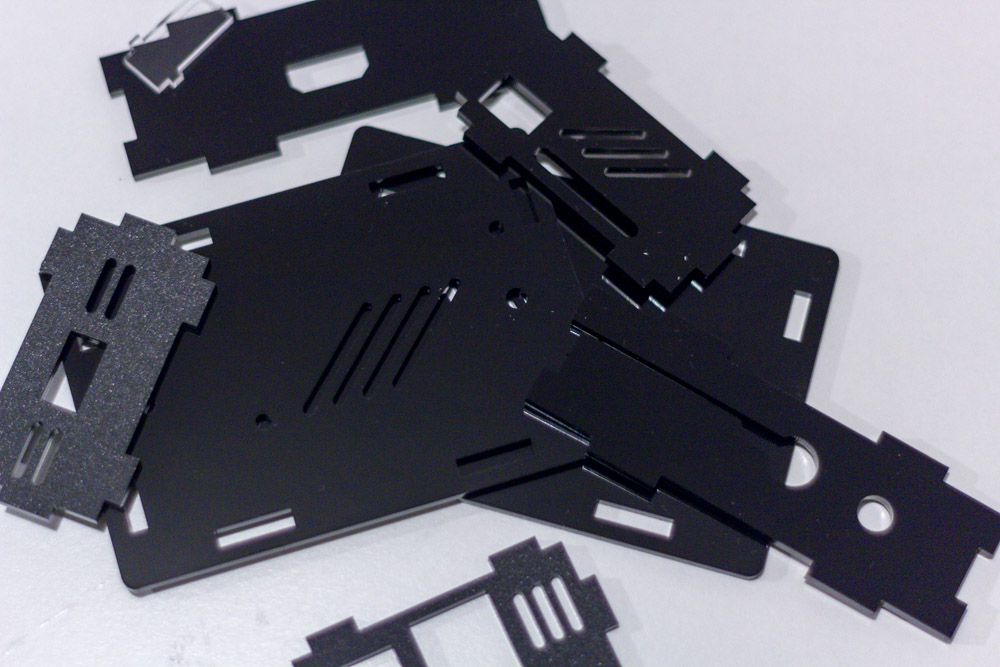
Nwazet Minitux Case Assembly Instructions
Bill of Materials
- 7x acrylic plates
- 4x black screws
- 2x 3/4" M/F hex standoffs
- 2x 1/4" F/F hex standoffs
- 1x light pipe
- 4x rubber feet
Note
Acrylic is a hard and stiff plastic which is sensitive to stress concentrations and shares a certain level of fragility with glass. This is most obvious with small or thin parts. Acrylic can scratch easily and should be cleaned with a mild solution of dish detergent and warm water. Never use cleaners unsuitable for acrylic. Never use a dry, abrasive cloth.
The matte side of the plates should be on the outside, and the glossy side on the inside.

Let's first check that we have all the parts in the bill of materials, plus of course a Raspberry Pi.

Carefully peel off the protection paper off of both faces of each acrylic part.

We are now ready to start assembling the Minitux case.

Attach the two 1/4" hex standoffs to the bottom of the case using two black screws. The matte side of the bottom of the case should be the side where the screw heads are, and the standoffs should be on the shiny side. The correct holes are two smaller ones.

If your Pi is a model B (the one with two USB ports and an Ethernet port), select the corresponding left wall.4

Then fit the left wall around the USB ports. It's important to do this before attaching the Pi to the bottom of the box. Make sure the matte side is on the outside.

If your Pi is a model A (that has only one USB port and no Ethernet), select the other left wall.

Then fit the wall over the USB port of the Pi. The vents should be slightly offset to the right and bottom. If they are not, you probably need to flip the wall over. Also make sure that the matte side is on the outside.

Now put the Pi onto the two standoffs that are already attached to the bottom plate while inserting the left wall into the proper slots of the bottom plate.

Screw the two 3/8" standoffs through the Pi's mounting holes and into the already in place standoffs. The Pi should now be strongly attached to the bottom of the case.

We will now add the front wall of the box.

Insert the front wall into the front slots of the bottom plate, and push the plate back so the it fits around the sound and analog video ports.

It is now time to add the back wall.

Insert the back wall into the bottom plate, then gently pull back the wall to bring it into its final vertical position.

Insert the right wall into the bottom plate, then gently pull it back into vertical position.

Attach the light pipe to the shiny side of the top plate using tape or a point of glue.

Maintain all walls in vertical position while you put the top plate in place. Gently press until you get a nice fit for the box. Be careful not to knock the light pipe out of position while adding the top plate.

Fasten the top plate using the two remaining black screws.

All that remains to be done is to attach the rubber feet.

Put one rubber foot at each corner on the bottom of the box.

And we're done. The box is now fully assembled.
Original author: Fabien Royer, nwazet.com

